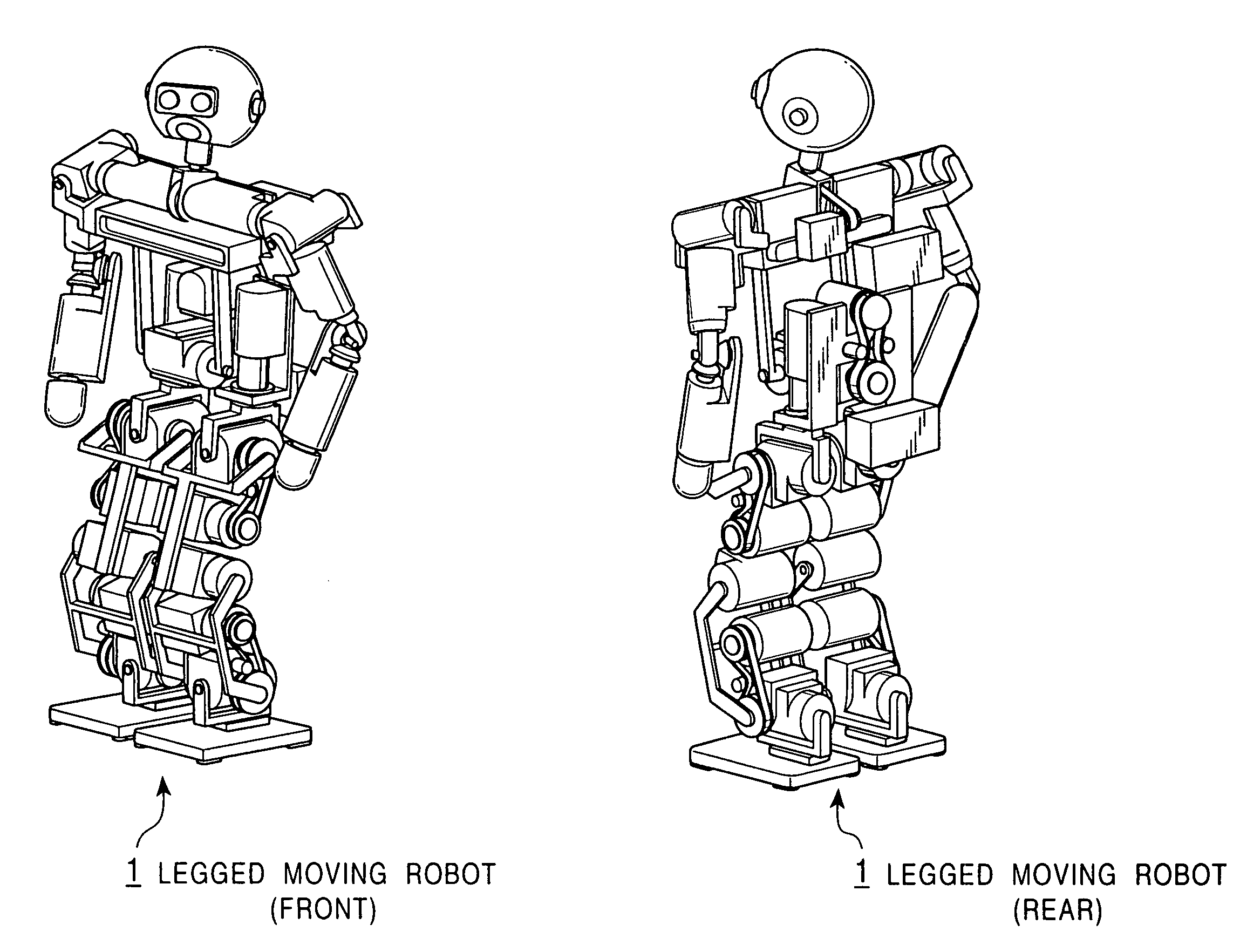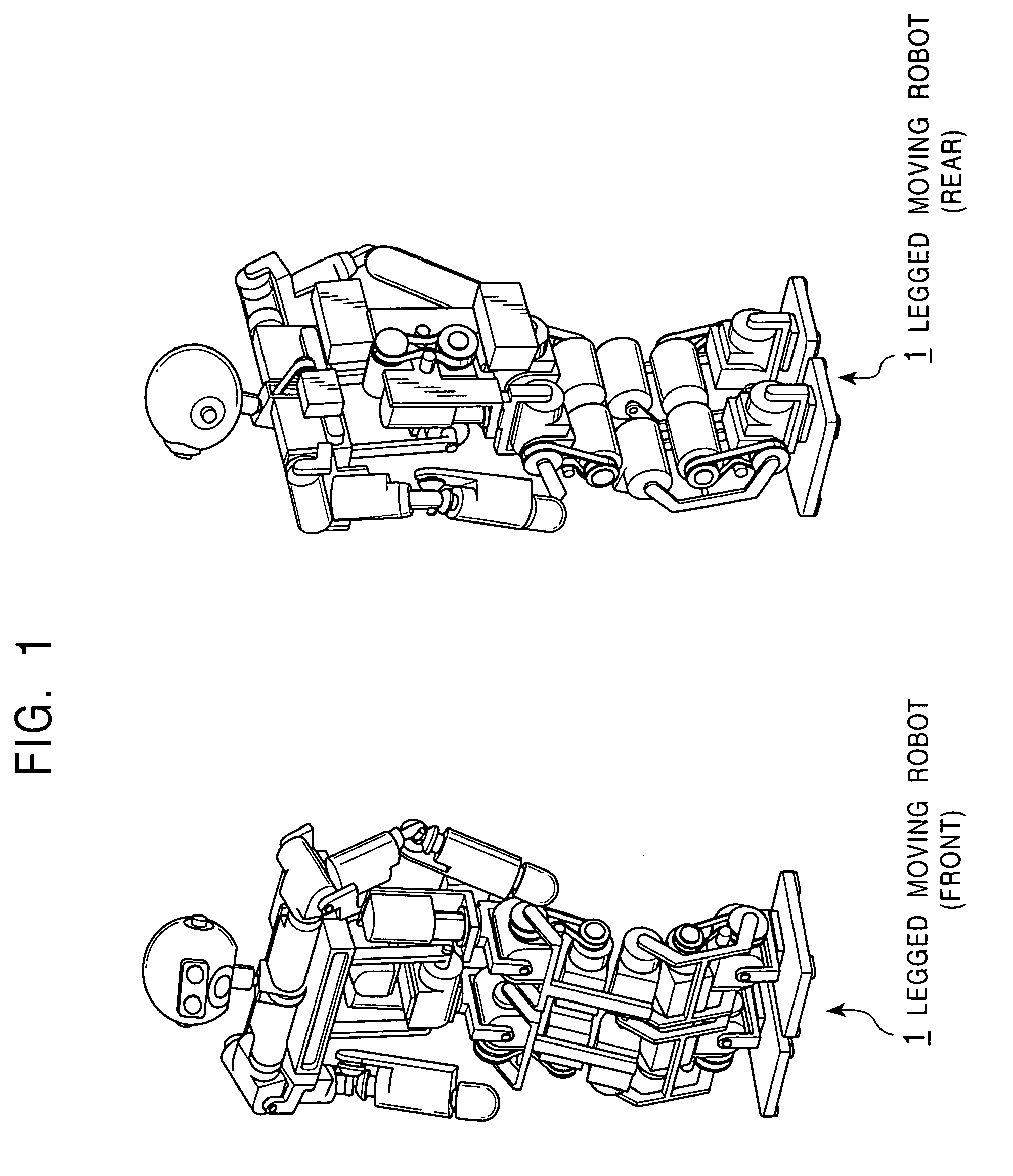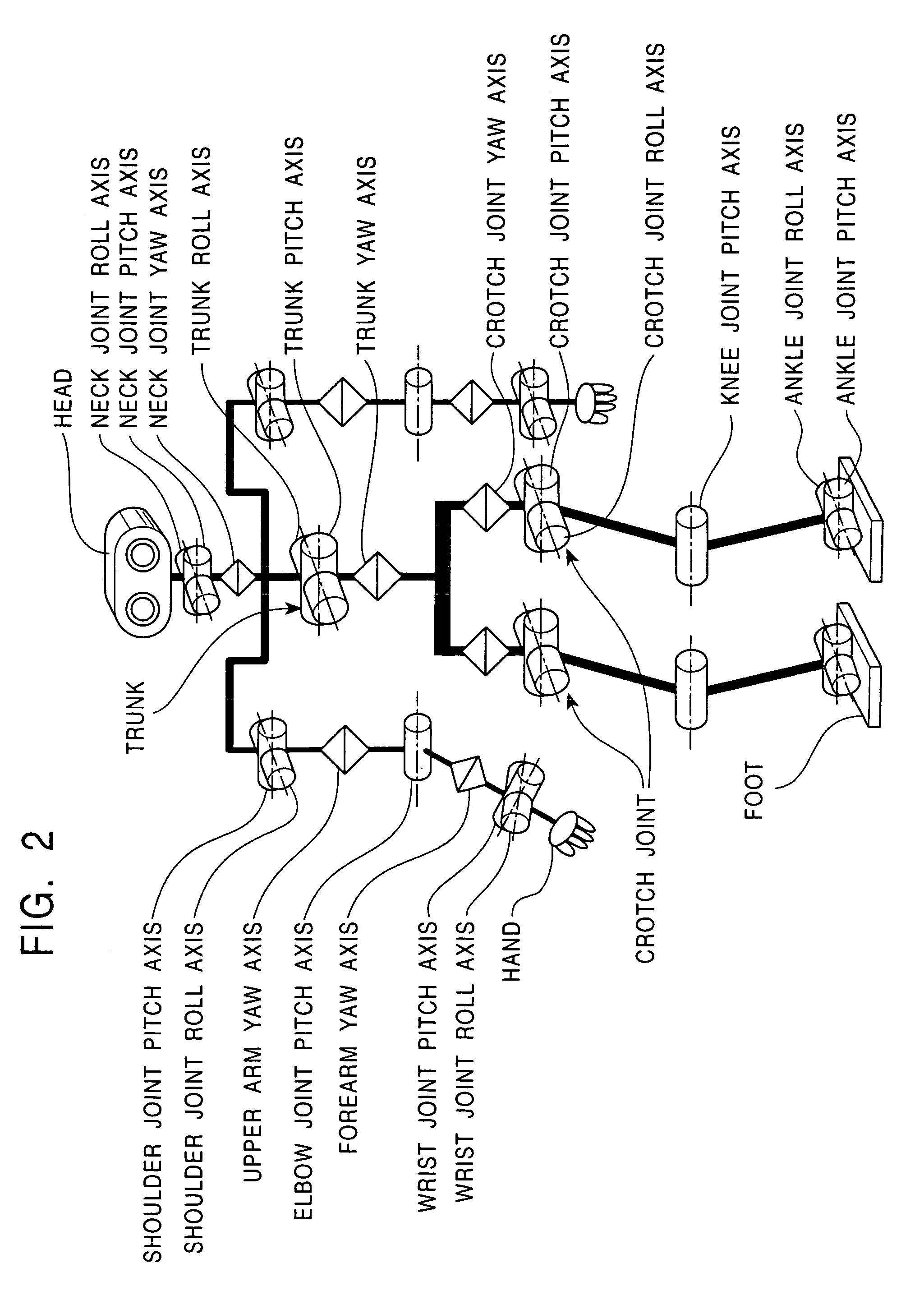Legged mobile robot and its motion teaching method, and storage medium
a mobile robot and robot technology, applied in the field of legged moving robots, can solve the problems of large burden on the work of the operator, difficult to create new actions, and inability to cope with unexpected situations
- Summary
- Abstract
- Description
- Claims
- Application Information
AI Technical Summary
Benefits of technology
Problems solved by technology
Method used
Image
Examples
Embodiment Construction
[0074]An embodiment of the present invention will be described below in detail with reference to the drawings.
[0075]FIG. 1 shows an external appearance of a legged walking robot 1 according to an embodiment of the present invention as viewed from the front and rear side. This walking robot is an amusement robot being human-like or of human type. The robot is made up of the upper limbs including two arms and a head, the lower limbs comprising two legs for realizing the moving operation, and a trunk interconnecting the upper limbs and the lower limbs. Further, touch sensors (not shown) are attached to ground-contact portions (soles) of feet so that touching of the feet on the ground surface can be detected.
[0076]FIG. 2 schematically illustrates a model constituting degrees of freedom of joints in the legged moving robot 1.
[0077]A neck joint supporting the head has three degrees of freedom represented by a neck joint yaw axis, a neck joint pitch axis, and a neck joint roll axis.
[0078]A...
PUM
 Login to View More
Login to View More Abstract
Description
Claims
Application Information
 Login to View More
Login to View More - R&D
- Intellectual Property
- Life Sciences
- Materials
- Tech Scout
- Unparalleled Data Quality
- Higher Quality Content
- 60% Fewer Hallucinations
Browse by: Latest US Patents, China's latest patents, Technical Efficacy Thesaurus, Application Domain, Technology Topic, Popular Technical Reports.
© 2025 PatSnap. All rights reserved.Legal|Privacy policy|Modern Slavery Act Transparency Statement|Sitemap|About US| Contact US: help@patsnap.com



